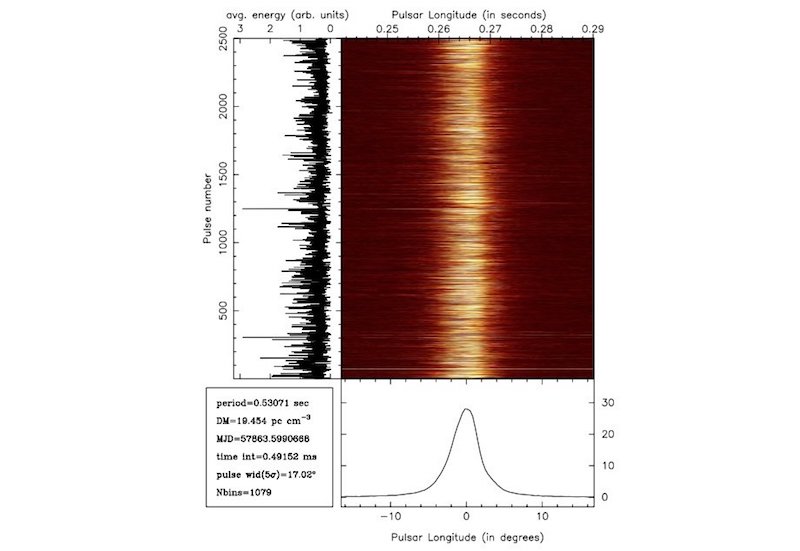 GMRT observation at 325 MHz of PSR B0823+26 on 2017 April 20, showing as a typical example PSR B0823+26 in B mode during 2500 single-pulse sequences, or ∼ 22 minutes of the total duration of ∼ 7.5 hours in B mode. Observation time versus pulsar phase centred on the main pulse with underneath the integrated profile of the main pulse, and to the left the average energy per pulse in arbitrary units. Credit: Hermsen et al., 2018.
GMRT observation at 325 MHz of PSR B0823+26 on 2017 April 20, showing as a typical example PSR B0823+26 in B mode during 2500 single-pulse sequences, or ∼ 22 minutes of the total duration of ∼ 7.5 hours in B mode. Observation time versus pulsar phase centred on the main pulse with underneath the integrated profile of the main pulse, and to the left the average energy per pulse in arbitrary units. Credit: Hermsen et al., 2018.
Aug. 20, 2018 (Phys.org) -- An international team of astronomers has detected synchronous X-ray and radio mode switching between radio-bright and radio-quiet modes in the pulsar PSR B0823+26. The discovery marks the second time that such synchronous mode switching has been observed in a pulsar. The finding is detailed in a paper published August 6 on arXiv.org.
To date, synchronous X-ray and radio mode switching has been identified only in one old and nearly aligned pulsar known as PSR B0943+10. Therefore, astronomers are interested in finding such behavior in other objects in order to improve knowledge about the poorly understood mechanisms behind this activity.
The most plausible hypothesis is that the pulsar mode switching is due to variations in the rate of accretion of material from the interstellar medium through which it is passing, the authors say.
(more)
READ MORE: Phys.org











